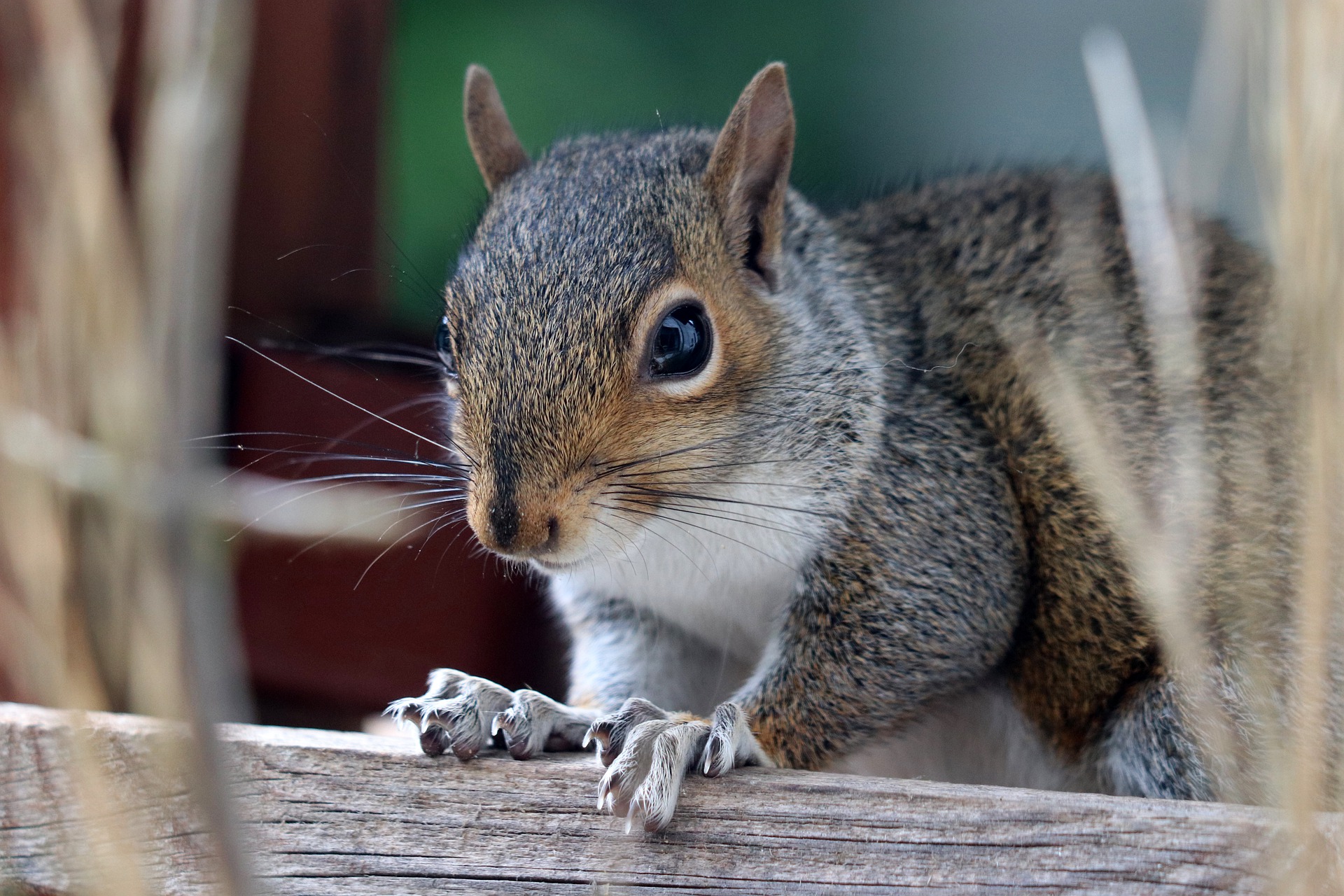Grey squirrels are a destructive invasive species that are having a serious impact on trees and vulnerable wildlife, including red squirrels – Mat Manning explains how to use a feeding station to bring the greys to book
WHAT TO USE
Most feed hoppers are of a similar design to bird boxes but with a feed tray in front of an outlet hole at the front. The sides of the tray should be low enough to allow you to take clear shots at squirrels if they decide to settle in there. Vulnerable areas of the feeder, particularly around the outlet, should be reinforced with metal to protect against gnawing. Good quality feeders can be purchased online but it is easy to make your own.
Wheat is the most affordable bait to load your feeders with but it lacks attraction if there are other food sources nearby. Maize and sunflower seeds have more appeal and, although more expensive, peanuts will get grey squirrels queuing up at any time of year.
WHERE TO TARGET
Focus on the areas of your woodland shooting permission where you have seen the most squirrels. In the absence of frequent sightings, look for other signs such as squirrel’s dreys and trees that have been damaged by the rodents’ bark-stripping. Likely places include areas around trees such as oak, hazel, beech, sweet chestnut and walnut, which provide natural food, and areas where dense patches of ivy provide shelter for squirrels.
GETTING STARTED
Attach your feeder to a tree at a height that keeps it well clear of the ground and marauding badgers but is slow enough for you to refill comfortably. Fill it with bait and leave it alone for three or four days. Songbirds are likely to be the first visitors and their comings and goings will attract squirrels.
When you return to check the feeding station the feed should already be going down. Refill and leave it for a few days. After a week, the feed should be going down quite steadily – now is the time to build your hide. If your feeder has not received any attention after a week, move it to another spot.
KEEPING CONCEALED
You only need a very basic hide to keep you out of sight when shooting grey squirrels from a feeding station as the rodents are usually too distracted by the food to take much notice of what’s going on around them. It should be positioned between 20 and 25m from the feeder and afford you a clear view of feeding squirrels.
My usual choice is a net hide propped up with purpose-made hide poles. I like to have a substantial backdrop behind it – either a bank, bushes, a thick tree trunk or branches – to keep my silhouette hidden. After constructing a hide, I leave it in position for another week. During this period the squirrels will grow in confidence at the feeder, attract even more of their mates and learn to ignore the hide.
GUN, SCOPE AND AMMO CHOICE
Any accurate airgun, either sub-12ft/lb or high-power is suitable for controlling grey squirrels at a feeding station. My go-to airgun is a .22 calibre Daystate Red Wolf which churns out a muzzle energy of just over 30ft/lb. Such a powerful airgun is not essential when targeting squirrels at relatively close range but it gives me extra reach if I need to take wary squirrels or avian quarry at range. My Red Wolf is paired with an MTC Mamba scope. In my opinion, this versatile little optic is as close as you can get to perfection for airgun pest control.
I usually couple the Red Wolf with Rangemaster Sovereign pellets. This may sound like a light round to be using with a high-power airgun but they are extremely accurate out to around 60m and are less inclined to ricochet than heavier pellets or slugs – an important safety consideration when hunting in woodland.
THE SHOOT
The first shoot usually takes place about a fortnight after the feeder is put in position, by which time plenty of squirrels should be visiting with confidence. Fill the feeder the day before you intend to shoot because you don’t want to have to disturb it when you arrive.
Early morning sessions tend to be very productive as squirrels tend to wake up feeling hungry, although evening sessions can also be good. Head straight to the hide and settle in as quickly and quietly as possible. Make yourself comfortable as you may have to be patient. I like to use shooting sticks for extra support when taking sitting shots from a hide.
When a squirrel arrives, don’t be in a rush to take a shot. Give it time to take some feed from the tray and settle down to eat it – this will ensure that you are presented with a static target, which makes it much easier to ensure clean shots to the head. There is no need to break cover to retrieve dead squirrels until the end of the session – their mates are usually too interested in the feed to worry about the bodies beneath the feeder.
KEEP IT GOING
The first session on a feeding station is usually the best and can often yield bags of ten or more in just a couple of hours. When you leave the hide, refill the feeder and make sure you keep it filled until you return to shoot again – a week is about the right amount of time to leave between visits.
Your second session should yield less squirrels than the first, and numbers should continue to decrease until you draw a blank. When this happens and it appears that the only visitors are wild birds, it is time to move the feeder to another spot and start over again.
